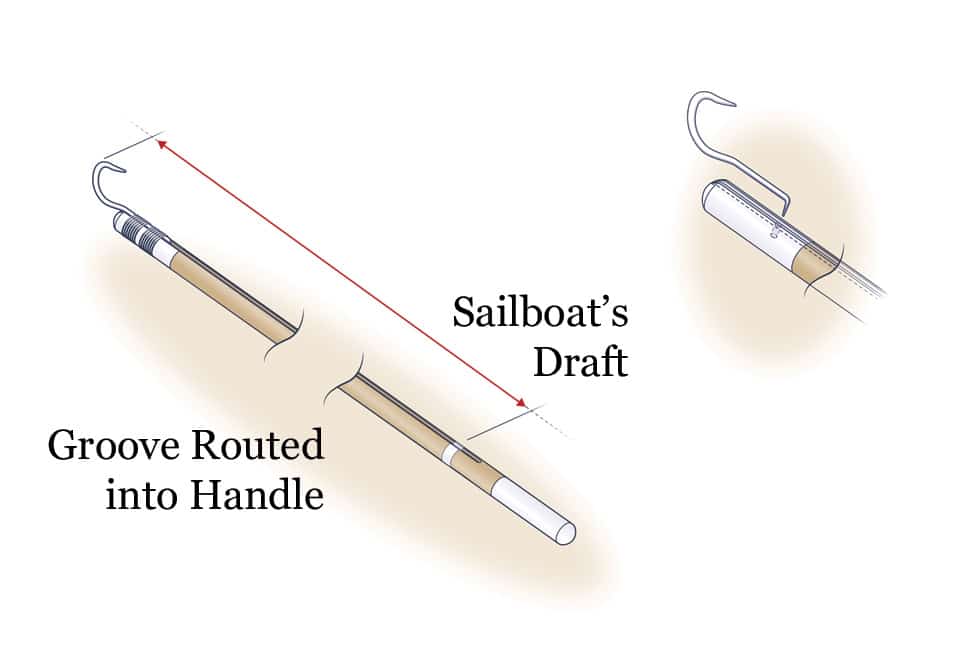
boat-hook.jpg
On my schooner, Bonnie Lynn, we always carry two wooden boat hooks, one of which is 10 feet long with a groove routed into the handle on the same side as the stainless-steel hook (see illustration). That way, regardless of visibility, as soon as it is in hand you know which side the hook is on. Each end is painted gloss white to help with visibility, and a white band marks our boat’s draft. Oak or ash closet poles, usually 1 5/16-inches in diameter and up to 96 inches long, are available from building outlets. Select one that is straight-grained and knot free.
For the hook, choose either a traditional style in polished bronze or stainless steel — these have a socket into which the pole is inserted and pinned — or the stainless-steel gaff style with a rounded tip. Round the handle end of the pole and slightly round the edges on the hook end. Rout a 1/4-inch groove along the pole to within a foot of each end. Shape and drill the end for the socket-type hook. For the gaff-style end, rout a groove to accept the hook’s shaft and drill a hole for the barb. The shaft should stand slightly proud of the pole to give friction against the seizing.
Sand the pole and coat it with several coats of clear wood sealer. To secure the gaff-type hook, I use a heavy fishing twine and do a spiral lashing over the entire shaft of the hook. Each circled pass hitches under the previous loop and is then snugged (in effect, it’s a continuous clove hitch), creating a knot that forms a spiral around the pole. The ends of the twine are burned flush.
Paint both ends gloss white, and varnish or paint the rest. Fully saturate the seizing with paint to lock it in place.
This article first appeared in the November 2013 issue of Cruising World as a sidebar in the article “Going to Ground.”








